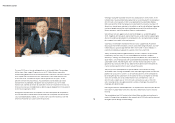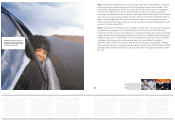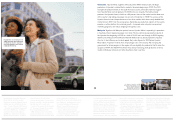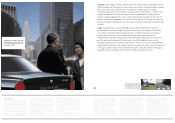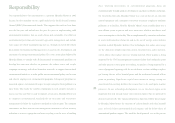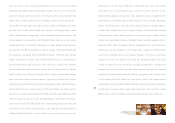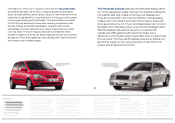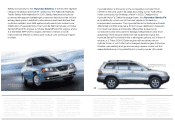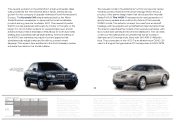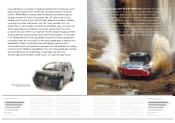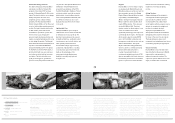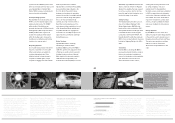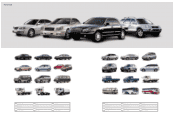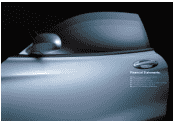Hyundai 2002 Annual Report Download - page 13
Download and view the complete annual report
Please find page 13 of the 2002 Hyundai annual report below. You can navigate through the pages in the report by either clicking on the pages listed below, or by using the keyword search tool below to find specific information within the annual report.dust. Growing investments in environmental programs focus on
environmentally friendly product development and direct pollution reduction.
On the production side, Hyundai Motor uses state-of-the-art air emission
control equipment and a composite wastewater treatment complex to minimize
pollutants at its facilities. Notably, Hyundai Motor’s Asan assembly plant uses a
zero-effluent system to process and reuse wastewater, which in turn lowers total
water consumption at the facility. This is complemented by consistent reductions
in waste and hazardous chemicals and in the use of energy, water and raw
materials in all of Hyundai’s facilities. New technologies that reduce water usage
are the ultrasonic airtight inspection system, the primer-less sealer and non-
woven fabrics that replace anti-rust waxing material. Water quality is being
improved by the CWS microorganism treatment facility that biodegrades paint
and odor present in water prior to recycling. Air quality is being improved by a
series of programs beginning with the use of electric resistant welding to replace
gas brazing, the use of less harmful paints and the mechanical removal of dust
prior to painting. Significant capital investments in energy saving are
concentrated on creating facilities that recover heat to be used again in other
processes. In our technology development, we see the diesel engine as an
important first-step towards future zero-emission engines that are powered by
electricity or fuel cells. The Common Rail Direct Injection (CRDi) diesel engine
by Hyundai Motor lowers the emission of carbon dioxide and other harmful
gases to levels below conventional diesel engines and far below those of
conventional gasoline engines. The need for diesel-powered cars in the present
Responsibility
Our responsibility to the environment is a priority. Hyundai Motor in 2002
became the first carmaker to win a gold medal at the Pacific Basin Economic
Council (PBEC) Environmental Awards. This supports the work we have done
over the last year and indeed over the past few years in implementing solid
environmental initiatives that are result-driven and sustainable. Our efforts in
environmental protection and renewal begin with management and include
every aspect of vehicle manufacturing and use, through to end-of-life vehicle
disassembly. Environmental Management is based on the development and
execution of a strong environmental policy. The seven action plans followed by
Hyundai Motor: to comply with all international environmental guidelines; to
develop low-emission vehicles; to promote the reduce, reuse and recycle
campaign; to manage and reduce hazardous materials; to support international
environmental initiatives; to make public our environmental policy; and to train
and educate employees in environmental programs. Subsequent programs are
measured against environmental targets in eight categories from pollutants to
noise levels. This tracks the number of programs in each category and gives a
success rate that can then be used to improve certain areas. Hyundai Motor sets
its corporate environmental standards for air emissions and wastewater
management far below the regulatory standards in each category. The company
concentrates on three areas in waste management: treatment as in heat recovery,
reduction as in waste segregation and waste recycling as in the reuse of smelting
25




